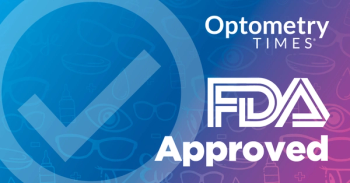
- Vol. 11 No.7
- Volume 11
- Issue 7
Practice cooperative management early to avoid later complications
ODs use their acumen to help patients maintain or establish the best quality of vision. They use tools of their trade to establish a diagnosis, then elaborate to patients in order to create a cooperative treatment. How ODs establish that cooperation is critical to how they manage patients.
For eyecare professionals to establish themselves as the primary-care providers of eyes, they have to establish the importance of proactive therapy or, quite simply, maintenance.
main·te·nance
/ËmÄnt(É)nÉns,ËmÄn(t)nÉns/
noun
noun: maintenance
The process of maintaining or preserving someone or something, or the state of being maintained.
ODs’ care
The irony is that ODs attempt to bring patients back for annual exams with the sole purpose of conducting a comprehensive examination of the eyes. A more granular way of looking (yes, pun intended) at the visit is as a physical for the visual system. I have often opined whether this yearly pilgrimage is necessary for a patient who has no comorbidities that could challenge the status quo.
For example, when ODs see patients who are diabetic, they are keen to provide a thorough visualization of the retina with great detail to the blood vessels accompanying the optic nerve. In addition, patients with a family history of macular degeneration are a cue for ODs to meticulously look at the macula, most likely taking photos or an optical coherence tomography (OCT). Furthermore, they check the intraocular pressure (IOP) on every patient-regardless of the glaucoma status or family history.
Previously by Dr. Bloomenstein:
However, when patients do have a history or risk factors, ODs provide the guidance to “prevent” further damage. These patients are encouraged-much like patients with progressive corneal dystrophies-to cooperate in managing the disease state. More specifically, ODs need their cooperation so changes can be noted and intervention can occur before that condition exacerbates to a point of damage.
But what about the patients who don’t fall into that category?
The majority of patients are disease-free, young, or symptomless. Perhaps they are coming in to update their refractions, although they don’t have concerns: The contact lens patient who has not had a change in his prescription for years or the presbyope who is just increasing the power of her near readers.
Should ODs be seeing these patients yearly? The common thread involved in every patient is “vision.”
Related:
For over two decades, ODs have had the ability to screen the cornea via a topographer; arguably, the topographer is now considered part of the standard of care.
This transcends those patients looking to have a corneal refractive procedure. Rather, the topography is used for early diagnosis of astigmatism, dry eye, contact lens measurements, and establishing a baseline. Think of the
While topography has grabbed a foothold in ODs’ armamentarium, there is another common malady plaguing patients’ transcending age. It is now well-documented that the 2007 innovation1 that placed a small computer in our hands to be used for hours nonstop also established a visual challenge: We do not completely blink-or, for some, at all-while using these devices.
Related:
Moreover, without a thorough blink, the meibomian glands don’t secrete. A 2012 study noted that the meibomian glands of dry eye patients were dysfunctional in 86 percent of eyes.2 There is an astounding correlation between dry eye and meibomian gland changes that is only getting worse. The change in the ocular surface has ramifications that go beyond just preparing patients for contact lenses or glasses. What ODs do today will determine patients’ vision for years to come.
Much like topography, ODs need to be able to view early signs of damage and changes to the morphology, then ensure patients’ cooperation in the management. Every time we do not blink, we are not secreting meibum. Every time patients allow obstruction to cease the flow of meibum, they are creating inflammation. Every time ODs see a patient, they need to gain a baseline of these crucial glands. Meibography may be a newer technology, but the visualization of the meibomian glands is a powerful image for patients.
Related:
Future of care
As more research elucidates the correlation with dry eye and meibomian gland changes, ODs will be able to give patients better guidance. It has already been established that clearing the obstruction, via heat and expulsion, can only help patients’ symptoms and set them up for the future.3
However, ODs also already know that maintaining healthy and active glands is needed for all patients’ most important activities-yes, I am speaking to screen time. How can an OD evaluate that annually without imaging?
When a patient walks into an OD’s lane, the prophylactic and proactive traits of the optometric profession need to be activated. It goes without saying that ODs are hoping to avert sight-threatening complications, but there are also the slow changes that they can affect daily. Much like how IOP, topography, and dilation provide ODs with a baseline, they also need to add meibography into their regimen to truly manage these patients.
References:
1. Apple. Apple reinvents the phone with iPhone. Apple Newsroom. Available at: https://www.apple.com/newsroom/2007/01/09Apple-Reinvents-the-Phone-with-iPhone/. Accessed 6/25/19.
2. Lemp MA, Crews LA, Bron AJ, Foulks GN, Sullivan BD. Distribution of aqueous-deficient and evaporative dry eye in a clinic-based patient cohort: a retrospective study. Cornea. 2012 May;31(5):472-8.
3. Long-term (3-year) effects of a single thermal pulsation system treatment on meibomian gland function and dry eye symptoms. Eye Contact Lens. 2016 Mar;42(2):99-107.
Articles in this issue
over 6 years ago
How to build a myopia control practiceover 6 years ago
Scleral contact lenses help manage ocular surface diseaseover 6 years ago
Best practices for managing keratoconus patientsover 6 years ago
9 simple solutions to 9 complex casesover 6 years ago
Consider the underrated significance of vitamin K2 in eye careover 6 years ago
Maintain open communication with primary-care physiciansover 6 years ago
One steroid drop, one time for allergic responseover 6 years ago
Q&A: OD research, the future of dry eye, being a wild manover 6 years ago
Explore the relationship between dry eye and sleepover 6 years ago
Offer more comfort to contact lens wearersNewsletter
Want more insights like this? Subscribe to Optometry Times and get clinical pearls and practice tips delivered straight to your inbox.


















































.png)


